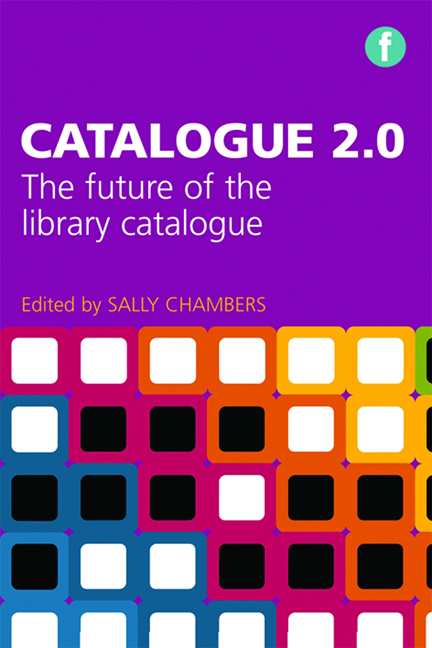Book contents
- Frontmatter
- Dedication
- Contents
- Acknowledgements
- Foreword
- Introduction
- Editor and contributor
- 1 Next-generation catalogues: what do users think?
- 2 Making search work for the library user
- 3 Next-generation discovery: an overview of the European scene
- 4 The mobile library catalogue
- 5 FRBRizing your catalogue: the facets of FRBR
- 6 Enabling your catalogue for the Semantic Web
- 7 Supporting digital scholarship: bibliographic control, library co-operatives and open access repositories
- 8 Thirteen ways of looking at libraries, discovery and the catalogue: scale, workflow, attention
- Index
1 - Next-generation catalogues: what do users think?
Published online by Cambridge University Press: 08 June 2018
- Frontmatter
- Dedication
- Contents
- Acknowledgements
- Foreword
- Introduction
- Editor and contributor
- 1 Next-generation catalogues: what do users think?
- 2 Making search work for the library user
- 3 Next-generation discovery: an overview of the European scene
- 4 The mobile library catalogue
- 5 FRBRizing your catalogue: the facets of FRBR
- 6 Enabling your catalogue for the Semantic Web
- 7 Supporting digital scholarship: bibliographic control, library co-operatives and open access repositories
- 8 Thirteen ways of looking at libraries, discovery and the catalogue: scale, workflow, attention
- Index
Summary
Introduction
In the wake of the digital revolution, libraries have started rethinking their catalogues and reshaping them along the lines that have been set by popular search engines and online retailers. Yet it has also become a hallmark of nextgeneration catalogues to reflect the results of studies concerning user behaviour and user needs and to rely on the participation of users in the development and testing of the new tools. A wide array of methods for userdriven design and development are being employed, which ideally leverage discovery platforms that reflect the specifics of library metadata and materials as well as the need for attractive design and useful new functionalities.
After looking back at the history of user studies on online catalogues, we will briefly investigate methods to involve users actively in the design and development processes for new catalogues before describing and examining the outcomes of studies of users’ perceptions.
Catalogues: where are we coming from?
The catalogue is the core product of any library. The accessibility of the catalogue via Telnet or later the web was considered a huge achievement because – to quote from one of Ranganathan's famous Five Laws of Library Science (Ranganathan, 1931), it ‘saved the time of the reader’ in terms of saving them the trip to the library. But the first generation of online catalogues has to be considered as a byproduct of the automation of circulation processes or metadata exchange between libraries. The early online catalogues served internal purposes in the first place, rather than being meant as a service for users.
It is therefore not surprising that there is little to no evidence about the consideration of user needs and perspectives in the literature about the development of the early Online Public Access Catalogues (OPACs). They were, however, the subject of quite extensive research after they had been introduced. Early user studies identified significant problems with subject searching (Cochrane and Markey, 1983). There is plenty of literature from the 1980s about preventing users from failing with searches other than ‘knownitem’ searches. In response to the results from these studies, a lot of research has been conducted about supporting users with subject searching, for instance by helping them to match their terms with those used in the catalogue or by offering linguistically enhanced retrieval functionality such as stemming or spelling correction (Walker, 1987).
- Type
- Chapter
- Information
- Catalogue 2.0The future of the library catalogue, pp. 1 - 16Publisher: FacetPrint publication year: 2013
- 2
- Cited by



